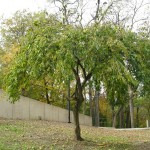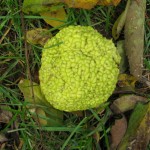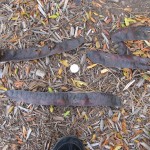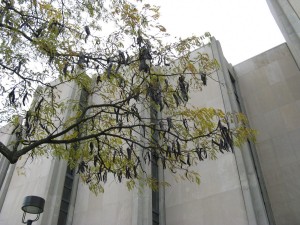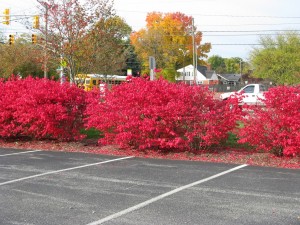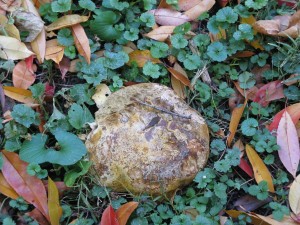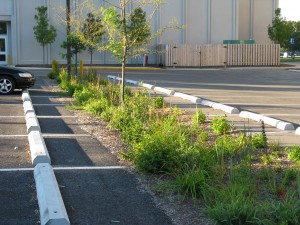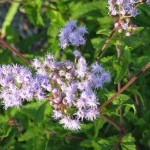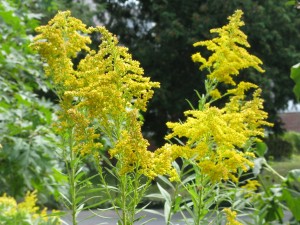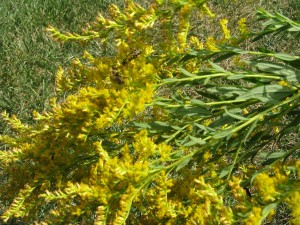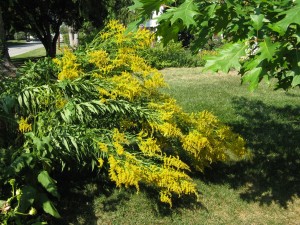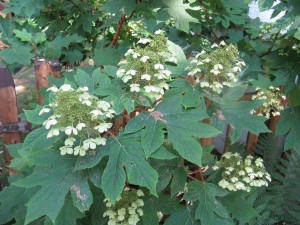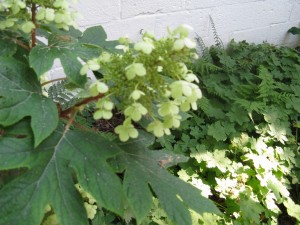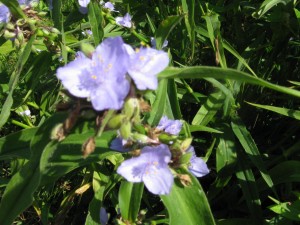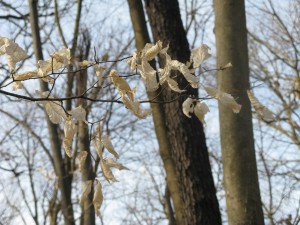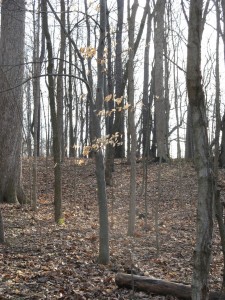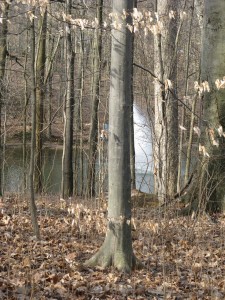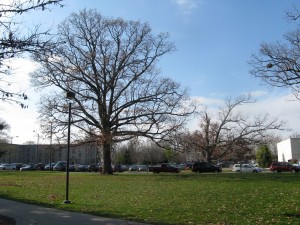Traditionally the 3rd week in October is peek color time for fall foliage in our area. Despite the unusual weather extremes this summer it seems to be true this year, too. This is the best time of year to distinguish the different hardwood trees that make up our Central Indiana Forests.

Fall color
A few weeks ago I could see the reddish-purple hue of green ash in the woods along roads and highways. This lets you know how many trees are likely to succumb to the Emerald Ash Borer. This week it seems the sugar maples are ablaze with red-orange. Hackberries turn pale yellow-green; oaks a burnished russet or copper.
For more information on leaves and why they turn color check out our Herbarium website at www.butler.edu/herbarium. We have a whole section on trees and the Butler tree walk.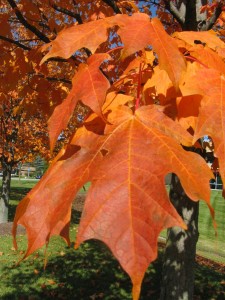

Sugar maple branch
Two other fall items of note. This seems to be a super year for fruit on redbuds. I wrote about these small trees, members of the bean or legume family, in the spring.

Redbud fruits are legumes, dry at maturity, splitting along 2 sides to release seeds
Following their nice floral display, now you can see the legume fruits, like small, dry beans, that hang from the branches.
A favorite shrub for fall color is chokeberry.

Chokeberry
As nice a red as the nasty, invasive, non-native, popular landscaping ornamental burning-bush, it also produces tasty fruit for birds to eat throughout the winter.

Chokeberry fruits. Bitter compounds break down and may even ferment through the winter, making the berries more tasty to birds
